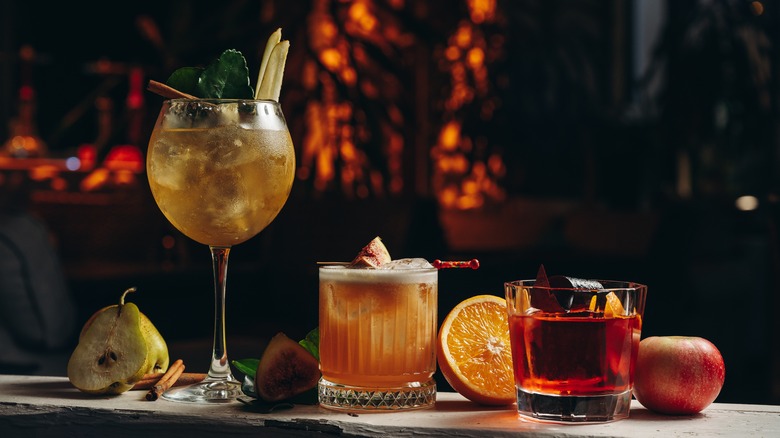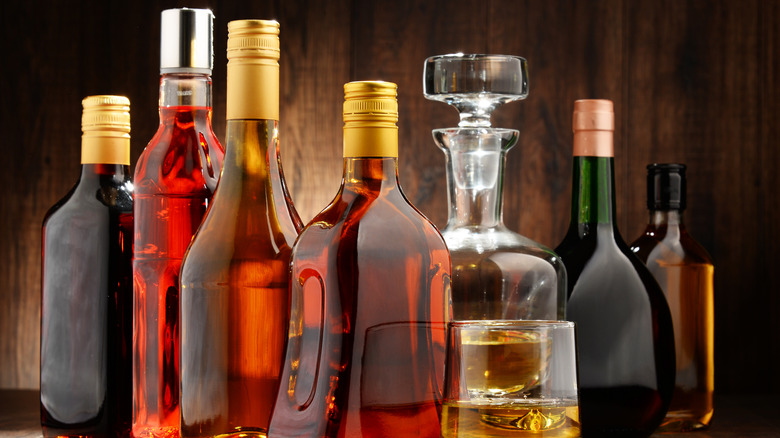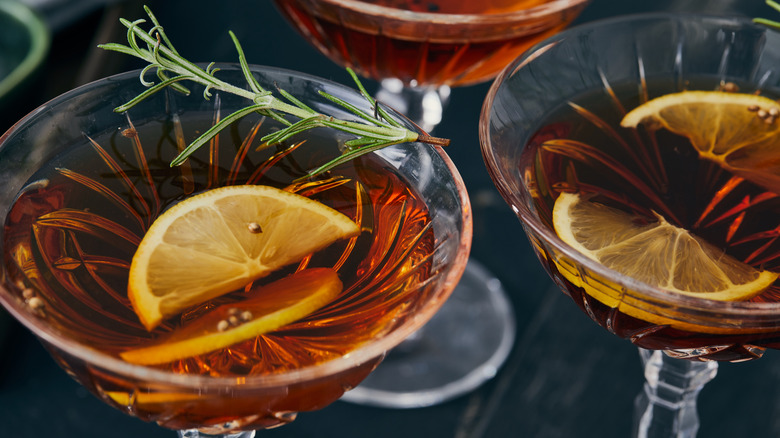Why You Should Try Fat-Washing Your Next Cocktail With Foie Gras
By their nature, cocktails can be a lot of things to a lot of people. They can be simple, straightforward, and boozy. They can be complex, sugary, and sweet. They can be elevated and sophisticated. You can start a Saturday morning with a Bloody Mary and end a Saturday night with a Manhattan. The cocktail's very definition as a combination of ingredients denotes a malleability to the needs of the drinker. And sometimes, that need is luxury.
There are few foods more colloquially luxurious than foie gras, which is the fattened liver of a duck or goose. This reputation is derived at least partially from its expense and partially from the skill required to prepare it properly (making it a staple of many a fine dining menu), but foie gras also has an incredibly rich taste that inspires culinary devotees. The high fat content present in the liver gives it this buttery flavor and smooth texture — and, perhaps unexpectedly, makes it perfect for infusion in a unique and unforgettable cocktail. A foie gras fat-washed cocktail is savory and decadent, with a bit of an adventurous flavor that will leave your party guests talking.
Once you procure some foie gras of your own, the process of creating a cocktail out of it really isn't terribly complicated. It starts with fat-washing, which is a technique for infusing the flavors of a fat or oil into alcohol.
The art and science of fat washing
Fat-washed cocktails first became popular around 2007 with the rise of bacon-infused bourbon at Please Don't Tell in New York City, but the mixologist who created it, Don Lee, doesn't take credit for the invention of the method. Traced ever further back through the ideas of bartender Eben Freeman and chef Sam Mason, the technique was probably inspired by the methods of perfumers who use fat-washing in their scent creation.
Unless you've purchased a container from a foie gras producer, you'll have to render the fat yourself, which, in simple terms, means melting it. Once you have the foie gras' fat in liquid form, you'll want to let it cool a bit before combining it with a spirit of your choice in an airtight glass jar (aim for around 4 tablespoons per standard 750 milliliter bottle of booze). Then, leave the mixed liquids sitting at room temperature for a few hours to allow the alcohol to bind with the fat and pick up its flavor, shaking the container a few times for deeper infusion. Afterward, put the mixture in the freezer overnight. When you take it out the next day, the fat will have solidified on top of the alcohol and can be easily broken apart and skimmed off — to make sure none of the fat is left behind, you can strain the alcohol through a cheesecloth. While the spirit will take on some of the fat's silky texture, its primary feature will be the rich flavor now infused.
Keep your cocktail elevated with other fats
Foie gras works well with the sweetness of bourbon or the versatility of vodka, and duck fat is the perfect addition to a gin-based cocktail like The Parisian Standard. The distinct flavor and smooth texture is decadent. However, this is an easy time for experimentation based on the end cocktail you have in mind.
You can play around with foie gras and the spirits and ingredients that will complement its buttery flavor, but once you have the technique perfected, you won't want to stop with foie gras. You can't go wrong with the now-classic bacon-infused spirits, especially when it comes to an easy-to-make bacon Old Fashioned. If sweet, nutty, and cozy is more your style, then browned butter will introduce a new level of flavor. For something subtle to elevate cocktails both sweet and savory, olive oil is ideal for infusion, and other oils like coconut, truffle, or even chili can bring a little complexity and interest to your cocktail repertoire.


